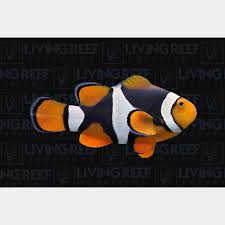Tea is an integral part of Chinese culture, symbolizing harmony, balance, and enlightenment. Throughout history, China has produced legendary tea masters, individuals who refined the art of tea drinking, brewing techniques, and philosophy. Their influence extends beyond simple consumption, shaping literature, spiritual practices, and traditional ceremonies.

This article explores renowned tea masters in Chinese history, their contributions, and how their philosophies continue to shape tea culture today.
1. Lu Yu (陸羽) – The Sage of Tea (733–804 AD)
1.1. The Father of Chinese Tea Culture
Lu Yu, a Tang Dynasty scholar, is widely regarded as the greatest tea master in history. He authored “The Classic of Tea” (茶经, Chájīng), the first book on tea culture, preparation, and philosophy.
1.2. Lu Yu’s Tea Philosophy
- Believed tea drinking should be a spiritual and meditative experience, not just a casual act.
- Emphasized purity of water, precise brewing techniques, and appropriate teaware.
- Integrated Confucian, Daoist, and Buddhist principles into tea rituals.
1.3. Lu Yu’s Legacy
His work shaped traditional Chinese tea culture and laid the foundation for Japanese tea ceremonies. Even today, his methods and principles influence tea connoisseurs worldwide.
2. Emperor Huizong (宋徽宗) – The Tea-Loving Emperor (1082–1135 AD)
2.1. An Emperor Devoted to Tea
Emperor Huizong of the Song Dynasty was not just a ruler but also a tea artist, poet, and calligrapher. He wrote “Treatise on Tea” (大观茶论, Dàguān Chálùn), documenting advanced whisked tea techniques.
2.2. Innovations in Tea Art
- Perfected the “Dian Cha” (点茶) method, where powdered tea was whisked into a frothy brew, influencing Japanese matcha culture.
- Introduced tea competitions at the royal court, where scholars and artisans competed to create the most refined tea foam.
- Advocated for the use of fine white porcelain to enhance tea’s aesthetic beauty.
2.3. Huizong’s Influence on Tea Culture
His contributions led to the rise of powdered tea drinking and elevated tea from an everyday beverage to an artistic and ceremonial experience.
3. Jiao Ran (皎然) – The Poet Monk of Tea (730–799 AD)
3.1. The Buddhist Monk Who Loved Tea
Jiao Ran was a Chan (Zen) Buddhist monk and poet who linked tea with spiritual cultivation. He was the first to write about tea’s connection to Zen meditation, influencing Japanese Zen monks who later developed the tea ceremony.
3.2. Jiao Ran’s View on Tea
- Believed that tea purified the mind and facilitated enlightenment.
- Described tea as an essential companion for scholars and monks seeking clarity.
- His poetry romanticized tea-drinking as an introspective and philosophical pursuit.
3.3. Lasting Impact
His poems and philosophy inspired generations of tea drinkers, shaping the spiritual aspect of tea culture in China and Japan.
4. Zhao Ji (赵佶) – A Song Dynasty Tea Aesthete (1082–1135 AD)
4.1. The Art and Science of Tea
Zhao Ji, also known as Emperor Huizong, was not only a ruler but a painter, calligrapher, and tea expert. He refined tea appreciation into an art form, insisting on the highest quality leaves and preparation methods.
4.2. Contributions to Tea Culture
- Codified tea evaluation criteria, emphasizing aroma, flavor, and texture.
- Popularized “white tea” as a noble and refined beverage.
- Developed the concept of tea ceremonies as an expression of beauty and refinement.
4.3. Zhao Ji’s Enduring Influence
His attention to tea’s aesthetics and philosophy continues to shape modern gongfu tea rituals and connoisseurship.
5. Yu Qian (于谦) – The Defender of Dragon Well Tea (1398–1457 AD)
5.1. A General and a Tea Enthusiast
Yu Qian was a Ming Dynasty general famous for defending China against Mongol invasions. Beyond his military career, he was a passionate advocate of Longjing (Dragon Well) tea.
5.2. Promoting Longjing Tea
- Recognized Longjing’s superior taste and quality, helping it gain imperial recognition.
- Advocated for the precise hand-processing methods still used in modern Dragon Well tea production.
- Wrote poems celebrating tea’s purity and connection to nature.
5.3. Legacy in Longjing Tea Culture
His efforts ensured Longjing tea became one of China’s most famous and prestigious teas, treasured by emperors and scholars alike.
6. Wen Zhenheng (文震亨) – The Ming Dynasty Tea Purist (1585–1645 AD)
6.1. A Scholar of Tea and Aesthetics
Wen Zhenheng, a Ming Dynasty scholar, wrote “Treatise on Superfluous Things” (长物志, Cháng Wù Zhì), detailing tea preparation, water selection, and teaware aesthetics.
6.2. Tea and the Art of Simplicity
- Advocated for minimalist tea sets, rejecting elaborate decorations.
- Believed that only spring water from specific locations should be used for brewing tea.
- Emphasized the meditative aspect of tea drinking, aligning with Zen ideals.
6.3. His Impact on Tea Culture
His writings continue to inspire tea aesthetes and minimalist tea drinkers, influencing modern gongfu tea preparation.
7. Chen Hongmou (陈宏谋) – The Tea Diplomat (1696–1771 AD)
7.1. A Tea Advocate in the Qing Dynasty
Chen Hongmou was a Qing Dynasty official who promoted tea trade and diplomacy, helping spread Chinese tea culture globally.
7.2. Tea’s Role in Diplomacy
- Encouraged tea farming and export, strengthening China’s economy.
- Used tea as a diplomatic gift to European traders, increasing international interest in Chinese tea.
- Advocated for standardized tea production techniques, improving tea quality.
7.3. His Lasting Influence
His work helped establish China as the world’s leading tea producer, shaping global tea trade for centuries.
Conclusion: The Timeless Influence of Chinese Tea Masters
From Lu Yu’s philosophical approach to Emperor Huizong’s artistic refinement, these tea masters transformed tea drinking into a refined cultural experience. Their contributions span literature, aesthetics, philosophy, and diplomacy, shaping how tea is enjoyed worldwide.
Even today, their principles guide modern tea culture, reminding us that tea is not just a drink but a bridge between history, nature, and the human spirit.
Leave a Reply